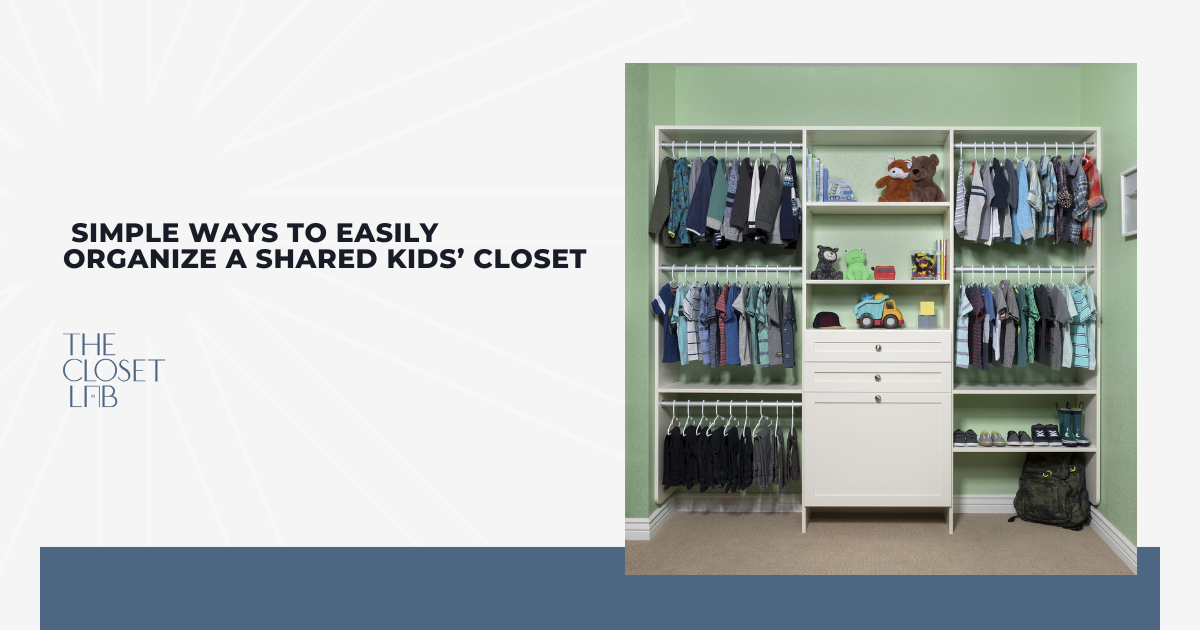
Managing a shared kids' closet can feel like trying to solve a puzzle with constantly moving pieces. Between the different clothing sizes, seasonal items, and the challenge of keeping everything accessible for multiple children, it's no wonder many parents find themselves overwhelmed by closet chaos. As a parent who's tackled this organizational challenge head-on, I've discovered that creating an efficiently organized kids' closet isn't just about maintaining order, it's about fostering independence and reducing daily stress. When you invest time in organizing a shared closet space, the benefits extend far beyond just knowing where everything is.
A well-organized closet means smoother morning routines, easier laundry management, and children who can confidently find and put away their own clothes. Plus, it teaches valuable organizational skills that will serve them well throughout their lives. Ready to open the door to shared closet space?
- Use color-coded storage solutions for each child
- Install adjustable shelving for flexible storage
- Designate hanging zones by clothing type or child
- Use drawer dividers for small accessories and clothing items
- Label everything for easy identification
- Use hooks for quick access to everyday items
- Rotate seasonal clothing and store off-season items
Let's dive into these game-changing solutions that will help you create a functional, organized space for all your children!
Use Color-Coded Storage Solutions for Each Child
One of the simplest yet most effective ways to organize a shared closet is through color coding. Assign each child their favorite color, and use it consistently throughout their storage solutions. From hangers to bins and baskets, this visual system makes it incredibly easy for children to identify their belongings at a glance.
I've found that color coding not only prevents mix-ups but also adds an element of fun to organizing. Children take pride in their designated color and are more likely to maintain order when they can easily identify their space. Consider using bright, distinct colors that don't clash—this makes the system both practical and visually appealing.
Install Adjustable Shelving for Flexible Storage
Flexibility is key when organizing a growing family's closet space. Adjustable shelving systems are worth their weight in gold, allowing you to modify storage space as your children's needs change. I recommend installing shelves at various heights, keeping frequently used items within easy reach for little hands.
Create zones within the shelving system by using baskets or bins that complement your color-coding scheme. Lower shelves can house daily essentials, like shoes and play clothes, while upper shelves are perfect for seasonal items or less-frequently used pieces.
Designate Hanging Zones by Clothing Type or Child
Creating distinct hanging zones transforms a cluttered kids' closet into a well-organized space where everything has its place. Install double hanging rods if space permits—upper rods for longer items, like dresses, and lower rods for shirts and pants. This maximizes vertical space while keeping clothes accessible.
Consider grouping clothes by type within each child's section: school uniforms, play clothes, and special occasion wear. This makes outfit selection straightforward and teaches children to maintain organization within their designated areas.

Use Drawer Dividers for Small Accessories and Clothing Items
Small items have a way of creating chaos without proper organization. Drawer dividers are essential for keeping socks, underwear, and accessories neatly separated and easily accessible. I use adjustable drawer organizers that can be customized to fit different-sized items perfectly.
Assign specific drawers or sections to each child, maintaining your color-coding system for consistency. This prevents the dreaded sock avalanche and makes it simple for children to find matching pairs independently.
Label Everything for Easy Identification
Clear, visible labels are your secret weapon in maintaining closet organization. Create labels that are both functional and fun—use pictures for pre-readers and text for older children. Label not just drawers and bins but also shelf edges and hanging rods to remind everyone where items belong.
I've found that involving children in the labeling process increases their buy-in and makes them more likely to follow the organizational system. Consider using erasable labels that can be updated as storage needs change.
Use Hooks for Quick Access to Everyday Items
Strategic hook placement can dramatically improve closet functionality. Install hooks at child-appropriate heights for backpacks, jackets, and frequently used items. This prevents clothes from ending up on the floor and makes it easy for children to grab and return items independently.
Consider using heavy-duty removable hooks that can be repositioned as children grow. Place hooks near the closet entrance for convenience, and create a dedicated hook zone for each child.
Rotate Seasonal Clothing and Store Off-Season Items
Regular seasonal rotation is crucial for maintaining an organized closet space. I dedicate time each season to assess, sort, and store off-season clothing. The Container Store warns that plastic storage boxes can lead to must and mildew, so either opt for other options, like fabric bins, vacuum storage bags, or even suitcases, or alternatively, use a dehumidifier to prevent moisture.
Store off-season items in under-bed containers or on high shelves, keeping current-season clothing easily accessible. This prevents overcrowding and makes it simpler to keep track of what each child has and needs.
Conclusion
Creating an organized shared kids' closet doesn't have to be overwhelming. By implementing these simple strategies, you can transform chaos into calm and create a space that works for everyone. Remember, the key to success is choosing systems that are easy to maintain and teaching children to use them consistently.
Start with one or two of these organizing solutions, and gradually add more as your family adapts to the new system. The effort you put into organizing your kids' closet today will pay dividends in smoother mornings, more independent children, and less stress for everyone.

